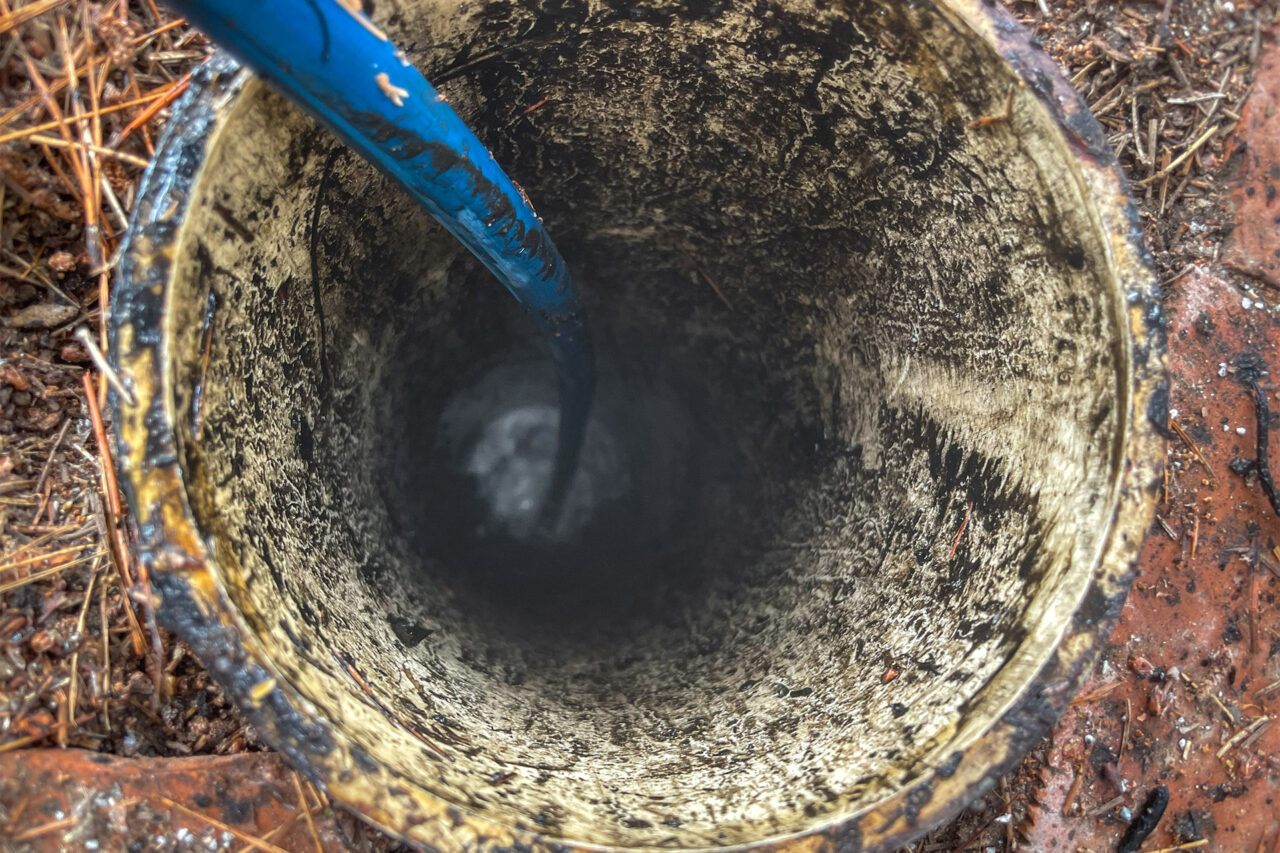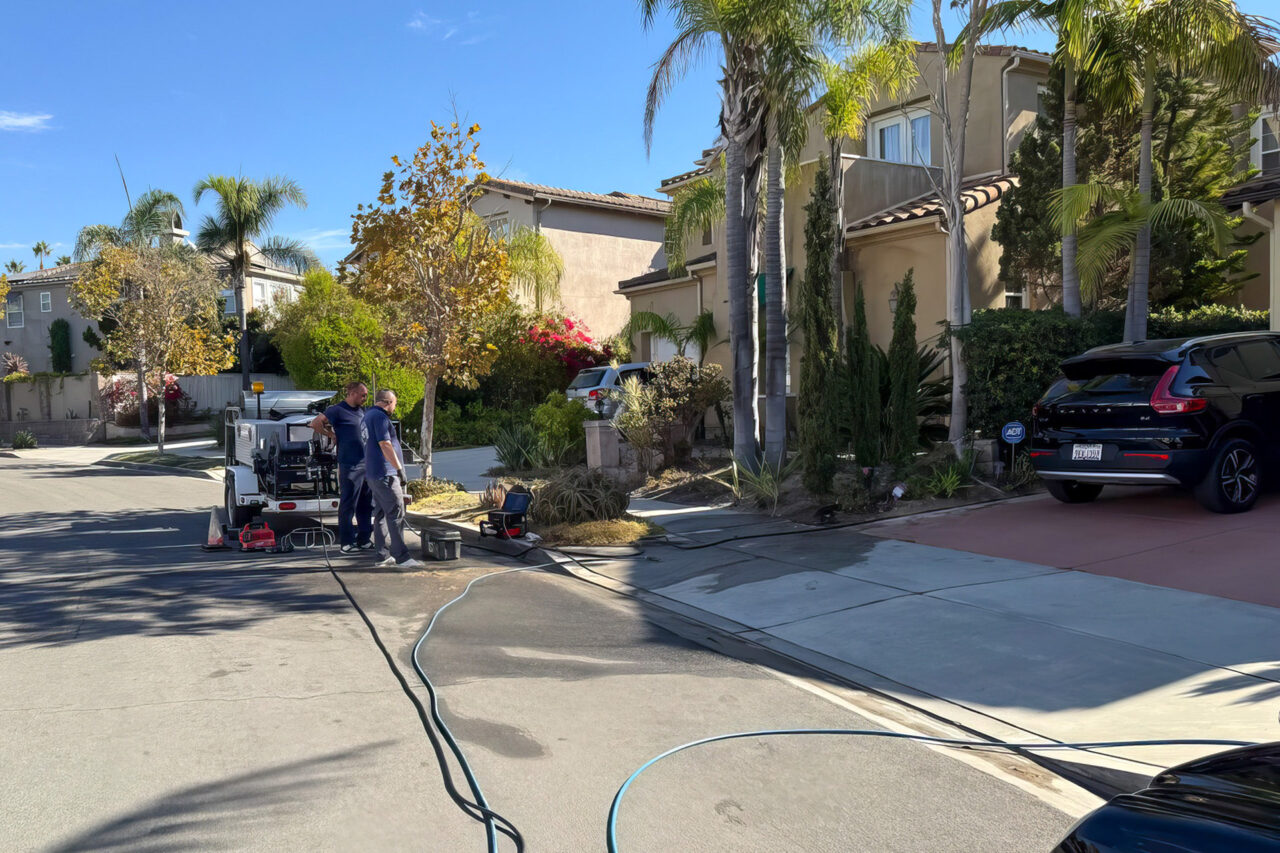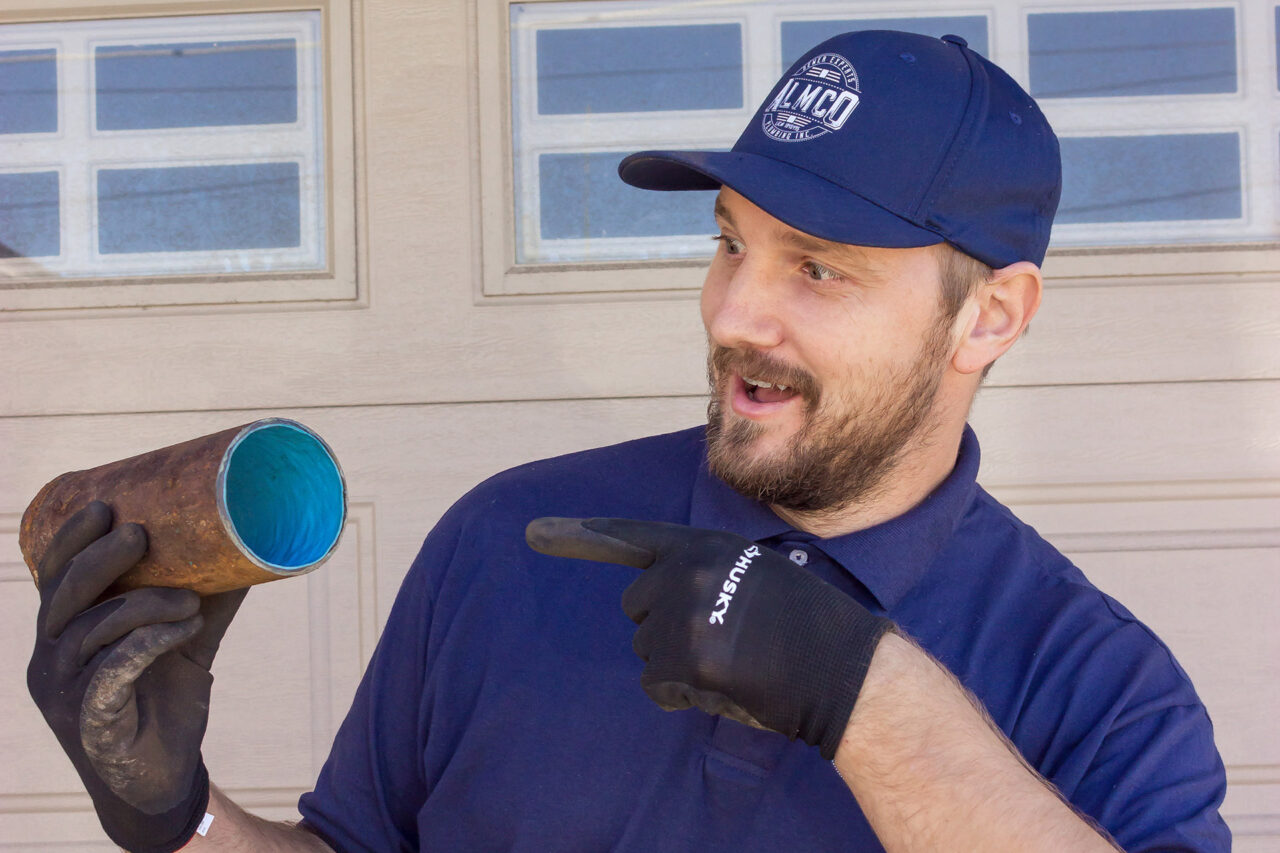How We Repair Storm Drainage Systems Blocked by Roots in Rancho Santa Fe
Rancho Santa Fe in San Diego is a picturesque place where nature and comfort are meant to coexist in harmony. However, even here, technical issues can arise that disrupt everyday life. One such issue was a malfunctioning drainage system, which caused water to accumulate on the property after rainfall. This is a common “ailment” of stormwater systems in this and nearby areas such as Carmel Valley, 4S Ranch, Del Mar, and others, where drainage pipes were installed without glued joints.
Below, we describe how this problem was resolved and share Almco’s recommendations for the proper installation and maintenance of stormwater systems.
Contents
Technologies & Services
Client’s Problem: Roots in the Storm Drainage System
The homeowner was faced with the following situation: A drainage pipe near the house became clogged. Even after light rainfall, water would pool in the center of the yard, forming a large puddle and making it difficult for residents to move around the property.
Upon inspecting the storm drain, we discovered a major blockage in the drainage pipe caused by roots from plants growing on the property. The roots had entered through the drain holes and formed a plug, preventing rainwater from flowing freely through the stormwater system.
This type of problem is common in Rancho Santa Fe and surrounding areas for two main reasons:
- In 95% of cases, drainage pipes are installed without glued joints, relying only on special mounting tape. After 2–3 years of use, the tape no longer fits tightly against the pipe walls, allowing roots to penetrate.
- Plants with shallow root systems can grow into drainage systems in search of water through the holes in protective caps and grates.
Clearing the Clogged Stormwater Drain with Hydrojetting
Our technician opened the decorative storm drain grate, but the water in the yard still stood without draining. To remove the standing water, we used a mobile pump, transferring it into a prepared holding tank.
We then decided to use our Hydro Jett high-pressure system to break through the blockage. This unit delivers 5,000 psi of pressure with a flow rate of 17 gallons per minute.
In the backyard, there were also stormwater catch basins. When we pressurized the pipeline at the point of water stagnation, we saw streams of water emerging from the backyard catch basins. This indicated that the main yard drainage line was relatively clear and the problem was in the section connecting the storm drain to the main sewer line. Therefore, we needed to clean this specific section—from the location of the large puddle to the point where the stormwater line meets the main sewer line.
It took some time to attempt clearing this section with high-pressure water. Because there was no drainage due to the blockage, we repeatedly had to pump out the water with our mobile pump and make multiple high-pressure flushing attempts.
From the pipe, we extracted clumps of soil, root fragments, and other debris—all of which we removed from the work area. We also used a long, flexible Hydro Jett hose paired with a calibrated diffuser head. This type of cleaning equipment is highly effective, and after many flushing cycles, water finally began to flow toward the main sewer line. The blockage was caused by roots that had grown through the drainage holes into the stormwater pipe.
Our team inspected all catch basins throughout the property and cleared the areas around the drains within several feet, removing all surrounding roots and extracting those already inside the pipes. The amount of root intrusion was significant, but through careful high-pressure flushing, we managed to clean every branch of the drainage system on the property.
The root blockages inside the pipe were heavy—about 5 feet long. Initially, we weren’t sure we could fully remove them, but we managed to clear them and restore the entire system’s function. We completed this challenging task in just over three hours, without dismantling any pipes or carrying out excavation work.
Our Solution Step-by-Step
Thanks to a comprehensive approach and the use of modern equipment, the stormwater drainage issue in Rancho Santa Fe, San Diego, was successfully resolved. The following work was carried out:
- Pumping out accumulated water using a mobile pump.
- Clearing the blockage in the drainage pipe with a Hydro Jett high-pressure unit (5,000 psi, 17 gallons per minute).
- Using a long flexible Hydro Jett hose with a diffuser head for thorough cleaning of the stormwater system.
- Removing plant roots from catch basins and from the surrounding area near drainage openings.
Despite the complexity of the blockage—caused by a massive root cluster about 5 feet long—we avoided dismantling pipes or performing excavation work, which significantly reduced both the repair time and cost.
How to Prevent Root Intrusion into Drainage & Sewer Systems—Tips from Almco Plumbing
This case demonstrates the importance of proper installation of drainage systems to prevent serious issues such as severe pipe blockages.
The problem most often arises due to:
- Sharp 90-degree bends, which make preventative cleaning with cables or hydrojetting difficult.
- Unglued joints, which allow roots to grow through them underground. This problem is most common in stormwater systems laid beneath concrete surfaces. When joints are glued, roots can only enter through the top openings; in 99% of cases, root intrusion under concrete happens at the joints.
The solution to root intrusion includes using chemical treatments to kill the root system and cutting roots from inside the pipe using Hydro Jett equipment. If water repeatedly fails to drain, there is a strong possibility that the pipe is completely broken internally.
In any case, we recommend consulting with professionals to determine the best method for cleaning the drainage system and preventing future problems. We often advise our clients to apply epoxy lining to the stormwater system after a complete cleaning, if possible.


